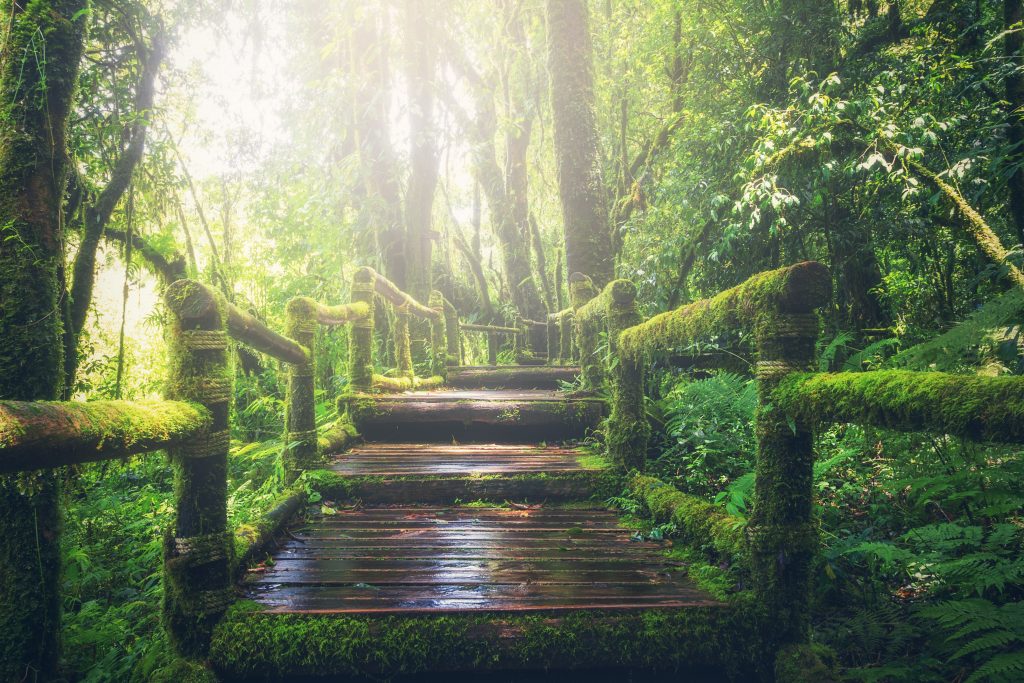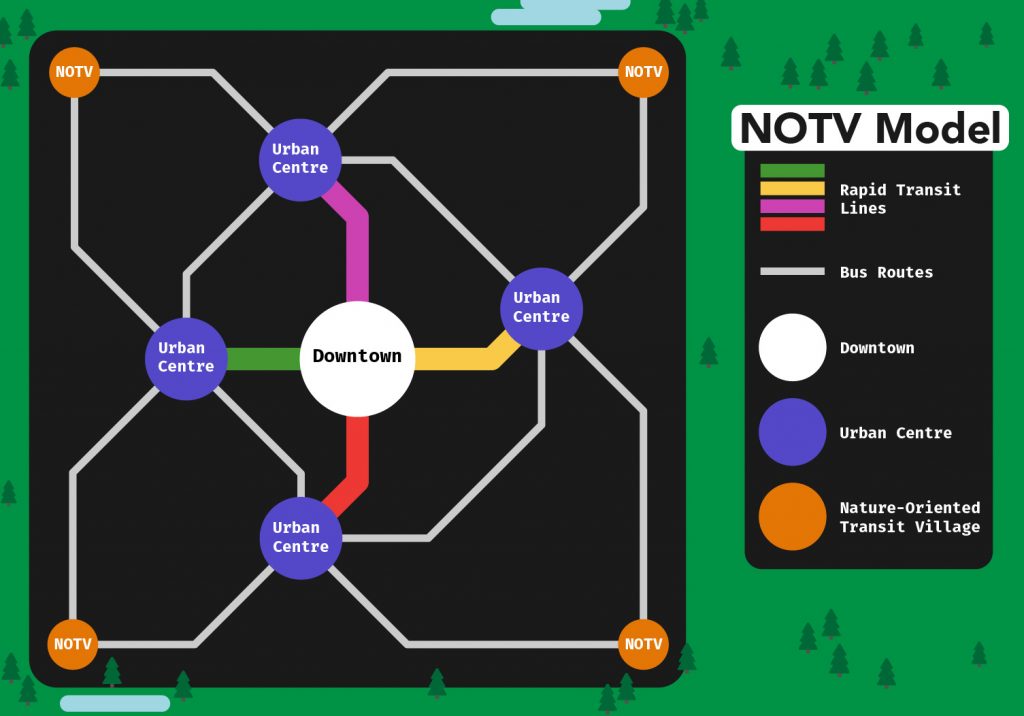The main question of this project is this: how exactly can we improve access to nature for non-drivers in Metro Vancouver? Serving trailheads by transit can be tedious, given their far-away locations and uneven visitation schedules (much higher traffic during warmer months and on weekends and holidays). If TransLink were to simply run more buses to hiking areas, many of them would run empty, leading to a cost-ineffective solution.
A better approach would consider both land-use and transportation. In this analysis, I propose building—or zoning for—more homes and shops near popular trailheads to create “Nature-Oriented Transit Villages” (NOTVs). These urban villages on the edge of the city could be an additional component of Metro Vancouver’s current land-use approach of creating “Urban Centres” near frequent transit. I argue that NOTVs would be an effective urban planning policy due to four primary benefits.

Metro Vancouver
The Direct and Indirect Benefits NOTVs
The most obvious benefit of NOTVs is a direct effect—building more homes near popular trailheads would allow more people to live close to nature. However, there are several other less-obvious positive outcomes that could result from this approach to land-use and transportation.

Photo from pexels.com
By anchoring the end of a transit line with a more densely-built area, it creates a more even distribution of ridership throughout the route, as explained by Walker (2011). This makes it more cost-effective to run buses or trains at higher frequencies, reducing the travel time to get from the city to nature. Moreover, having dense areas near the edge of the city provides natural transit hubs where several lines can converge.

Graphic by Elias Rieger
Another spin-off benefit of NOTVs is the impact on housing affordability. There is a dire shortage of housing in Metro Vancouver and building more homes of all types—rental, social, and private—would help bring prices down.
Finally, creating urban villages near the edge of the city could also lead to a more dynamic recreation experience. Including shops and restaurants in the NOTVs gives people more options for activities when going out for a day trip. One could take transit out to a trailhead, go for a hike, then end the day on a patio overlooking the forest. This commercial element would also contribute to local economic growth.

Photo by Connor Danylenko (pexels.com)